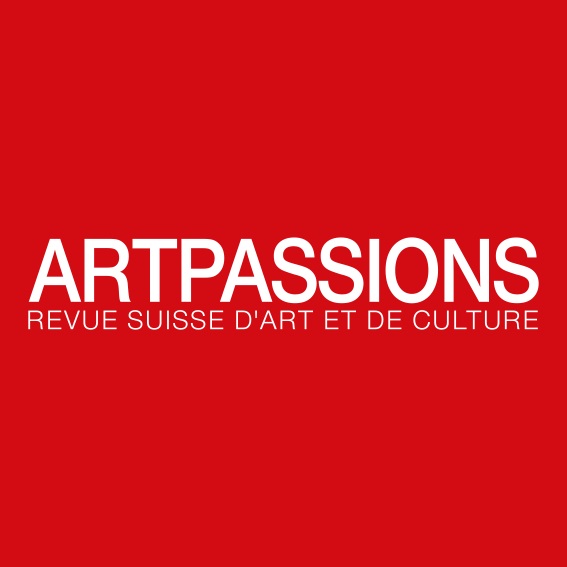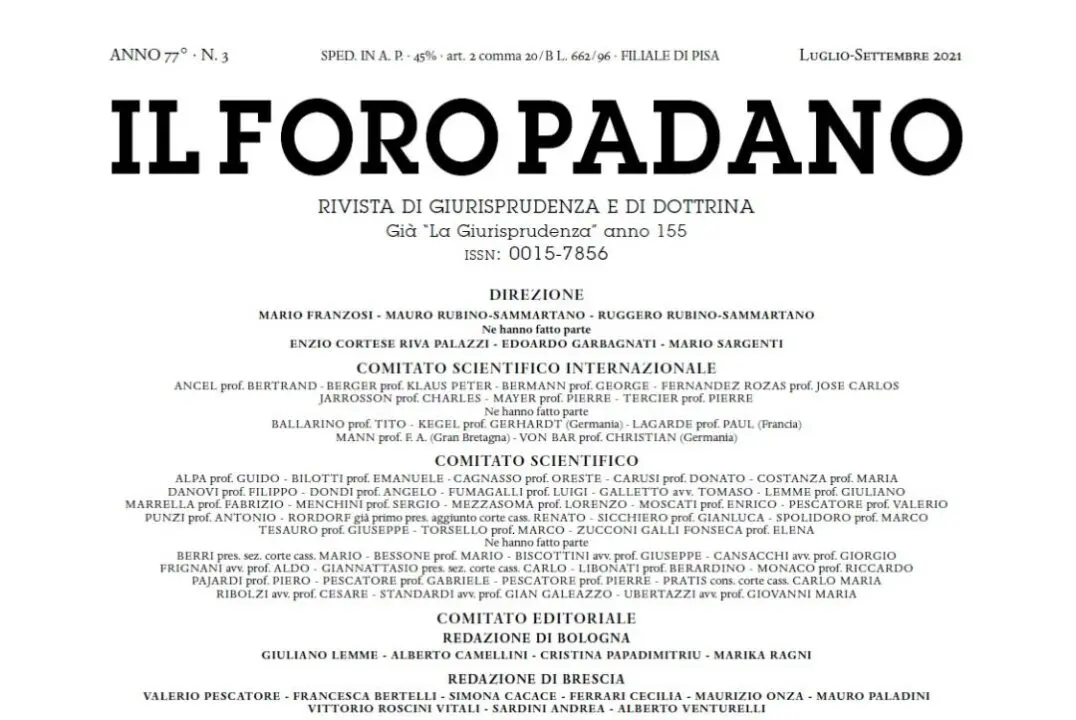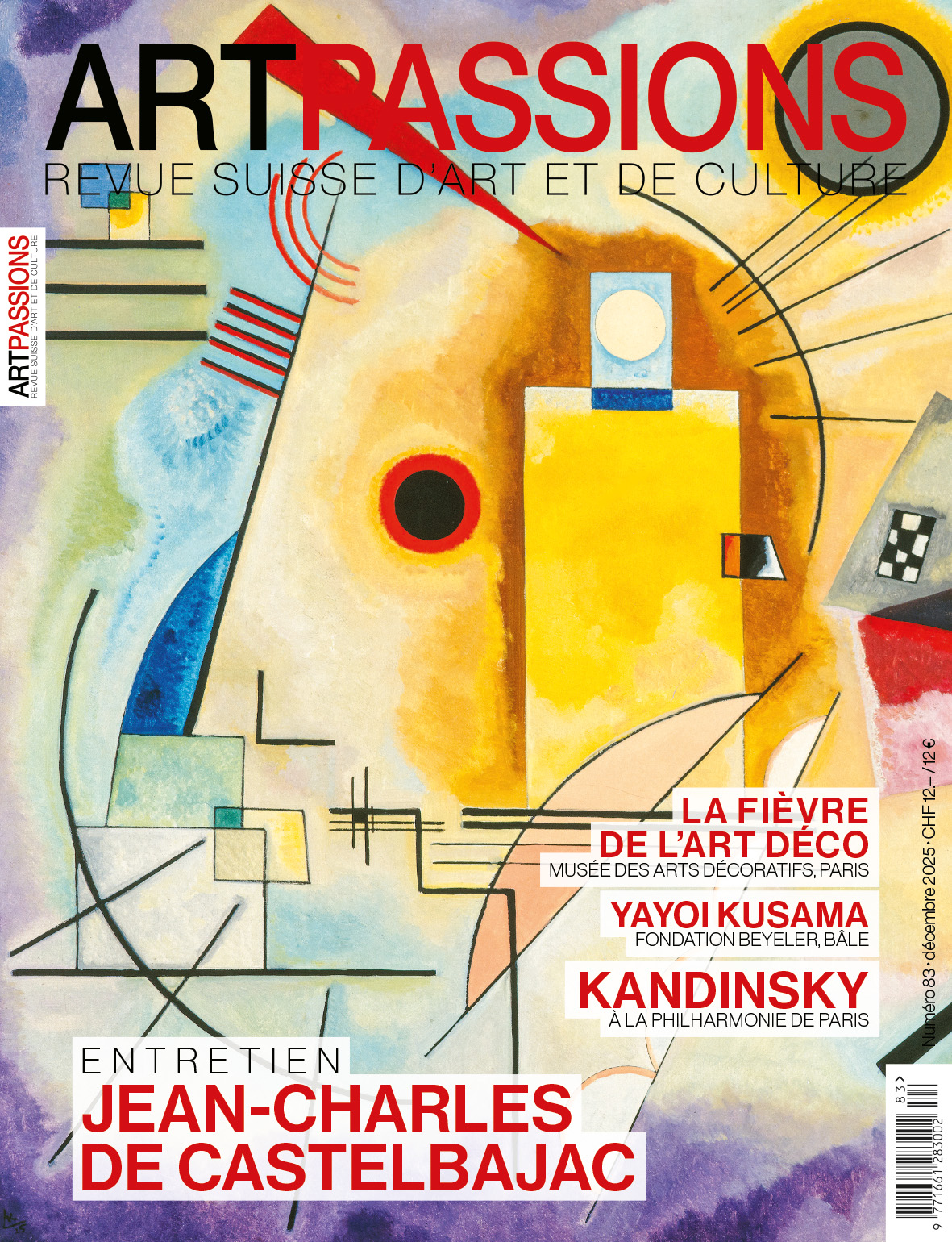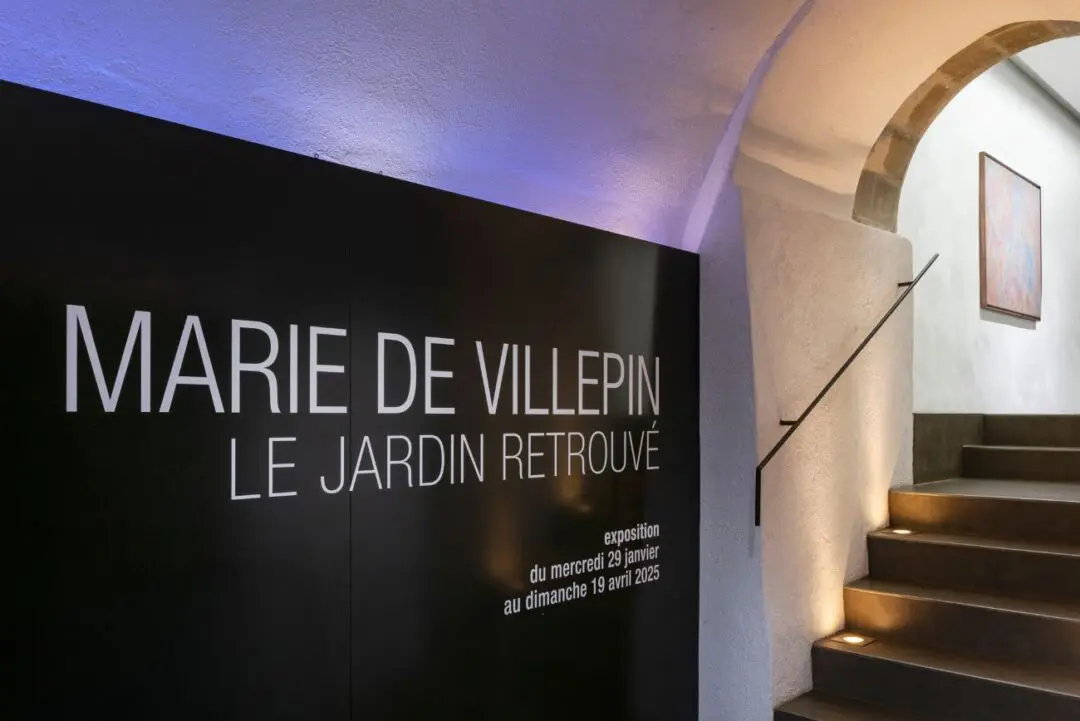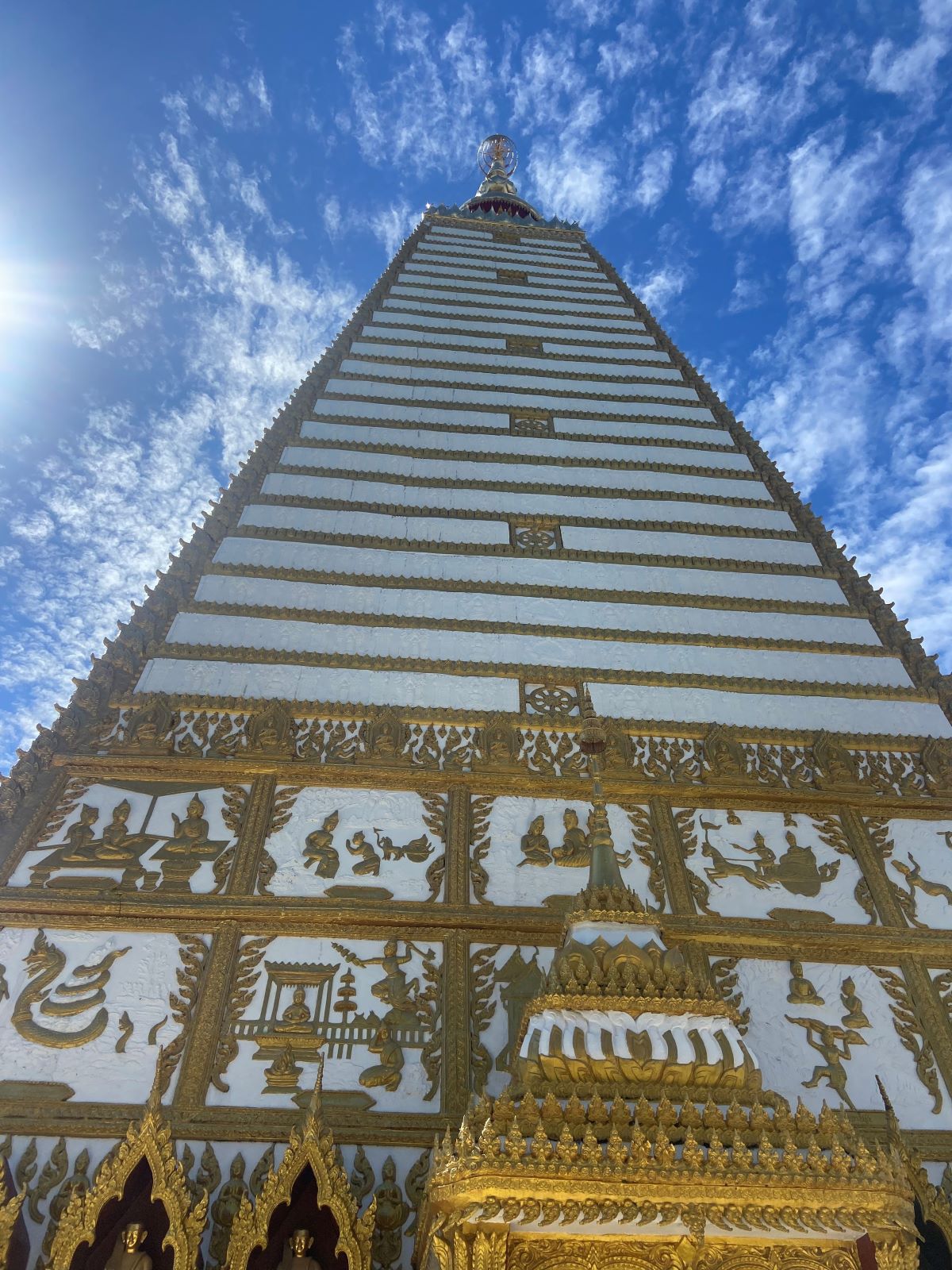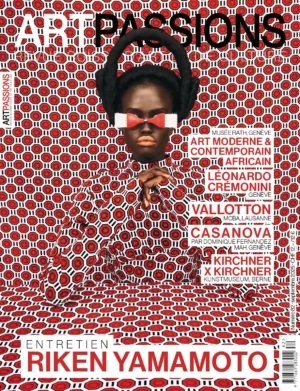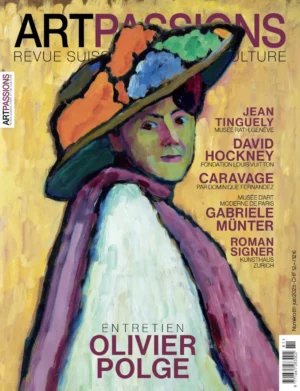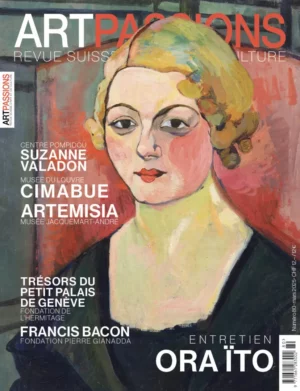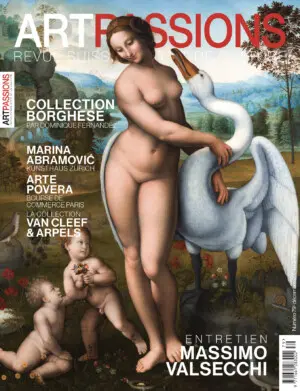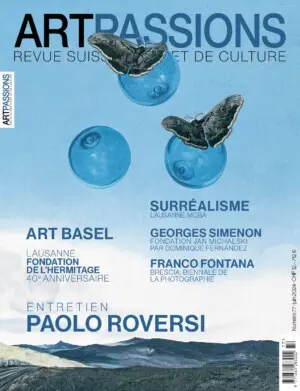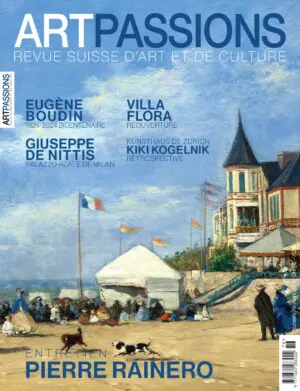by Matteo Piccinali[2]
New technologies such as those represented by blockchain and smart contracts, Artificial Intelligence, virtual and augmented reality, are progressively being experimented and applied also in the art world, offering the possibility to create new products, services and economic-operational models for all operators in the sector: for artists which have the possibility to use new tools and new forms of art creation, for example through the use of AI and tokenized works exchanged on distributed registers; for art galleries and auction houses that can exploit innovative systems designed to allow the visit and circulation of artworks, for example through virtual rooms and online sales; for museum institutions that, through the use of digitization systems and AR/VR/XR visualization, are able to start processes of preservation, archiving and access, even remotely, to the contents of their collections, expanding at the same time the type of services provided to users.
A comprehensive analysis on the use of new technologies in the art world is as stimulating as it is beyond the scope of this paper. At the same time, urged by the importance of the topic and trusting that in the near future we will be able to nourish further occasions of comparison and in-depth study on this point, we wish to engage in an “exploratory” exercise that seeks to enhance a possible practical use of some of the above-mentioned technologies in support of the Italian artistic and cultural heritage, one of the most renowned and rich in the world.
As noted in the study drawn up by the Italian Colao Commission in 2020[3], “Despite its international leadership in the number of cultural assets (first Nation for UNESCO heritage), Italy suffers from insufficient resources for the protection and development of artistic and cultural heritage in the face of the singular strategic value that this resource represents”.
In particular, “that Italy can boast an extraordinary historical, artistic, archaeological and landscape heritage, a legacy of the richness of cultures and traditions that have always found in Italy the conditions to develop and grow, is a universally recognized element. On the other hand, Italy has not always been able to keep up with the times dictated by innovation and seize the opportunities offered by the phenomena of digitalization which, for some decades now, have allowed opportunities for transformation and growth in the way cultural experiences are offered”[4].
The modernization of the cultural offer – aimed at realizing innovative forms of art valorisation – is today possible through the use of new technologies and forms of marketing that, in combination with each other, can allow the museum institution to implement (and increase) new forms of public fruition of the museum contents and, consequently, to implement at the same time an upgrading of its own economic model.
The 2019 Three-Year Plan for the Digitization and Innovation of Museums elaborated by the General Direction of the Italian Ministry of Culture identified a list of initiatives and tools to be used in order to achieve the upgrade of the aforementioned economic model, a list that includes, among others:
- Tools for the fruition of experiences in 3D, augmented, virtual and mixed reality
- Tools for the creation and evaluation of gaming experiences applied to cultural heritage
- Big Data collection systems, Analytics, Business Intelligence
- Ticketing services and online marketing of services/products
The study of new operational models in the museum sector and the consequent legal implications take into account, in a first approximation, working hypotheses aimed at introducing further “revenue streams” to counterbalance – but also to maximize – the lower volume of traditional revenues[5], introducing forms of economic return for the museum institution, taking into account the changed post-pandemic conditions and, more generally, in consideration of the renewed market dynamics that find, on the one hand, in the new technologies innovative paradigms of development and, on the other hand, a new pool of users – the millennials – more and more digital natives and, consequently, willing to take advantage of new forms of fruition of the artistic-cultural proposal.
One of the fronts of analysis on the instruments of economic support to the Italian museum ecosystem is represented by the methods of collecting private financial contributions.
The fundraising capacity of Italian museums, measured by the ability to attract contributions from private subjects (large and small donors) is very limited both for foundations, for which private contributions represent on average 11% of the total income, and for autonomous museums, for which the incidence of private contributions is even lower and is, on average, slightly above 3%[6].
The Italian experience in the context of cultural patronage is already significant in itself, but in any case, it has room for improvement.
The Decree Law No. 83 of 2014 introduced the so-called “Art Bonus”[7] a few years ago, i.e., the provision of tax relief through the recognition of a tax credit of 65% for donations in favor of public cultural heritage and entertainment that – to date – has allowed to collect donations for a total value of over 555 million euros[8].
Patrons can be both companies and banking foundations, for purposes of corporate social responsibility, as well as private citizens who are thus encouraged to actively participate in the preservation of national and local cultural heritage. Considering the fact that most patrons are represented by banks and foundations, it seems necessary that this tax incentive increases its attractiveness by involving new subjects[9], especially private citizens and, among them, the younger generations, those who will benefit more from a good and long-term strategy of preservation and promotion of the artistic and cultural heritage of the country.
Patronage is in some cases widely promoted as part of specific projects. See, for example, the following case-studies:
- TGE – Transnational Giving Europe (https://www.transnationalgiving.eu).
TGE is a private network involving 21 countries that allows European donors, both companies and individuals, resident in one of the participating countries, to financially support non-profit organizations in other member states by directly benefiting from the tax advantages provided by the country of residence.
At the same time, the TGE initiative allows organizations resident in participating countries to extend their fundraising activities to foreign countries, without the need to set up new offices abroad or to deal with any conflicts between tax and other legislation in the countries involved.
- International Patrons of Duomo di Milano (http://www.duomopatrons.org/it/).
International Patrons of Duomo di Milano Inc. is a foundation under U.S. law established in 2014 by the Veneranda Fabbrica del Duomo, i.e., the institution founded in 1387 to build the cathedral (and which still manages its maintenance), to raise international awareness of the need to protect, preserve and enhance the Duomo and its entire Monumental Complex.
Among other initiatives, the foundation is responsible for the crowdfunding campaign “Do you Duomo?”, which aims to raise in the United States 180,000 Dollars needed to adopt the spire representing St. Frances Xavier Cabrini, patroness of immigrants.
- Adotta una Guglia Project (https://adottaunaguglia.duomomilano.it/it/spire/).
The Adotta una Guglia initiative has been promoted by the Veneranda Fabbrica del Duomo to allow anyone interested to contribute to the restoration and preservation of one of the 135 spires of the Cathedral.
The amount required to “adopt” a spire is 100,000 Euro, which can also be reached through collective subscriptions with no minimum amount restrictions.
In exchange for the donation, each donor has the right to register his or her name in the Donors Register of the Veneranda Fabbrica del Duomo, to receive news on initiatives related to restoration and cultural activities as well as, depending on the amount of the donation, to receive additional benefits (for example, the issuance of a Certificate of Donation, provided for donations of 50 Euros or more).
- Io sostengo San Petronio Project (https://www.succedesoloabologna.it/io-sostengo-san-petronio/).
The “Io sostengo San Petronio” initiative, running from January 2016 to January 2017, was promoted by the Association “Succede solo a Bologna” in order to raise the necessary funds for the restoration works of the Basilica of San Petronio (an independent monumental work, as it does not belong to either the Curia or the Municipality of Bologna).
In particular, joining the project gave donors the right to participate in exclusive cultural events associated with the Basilica, including concerts and guided tours, as well as to receive gadgets of various kinds.
Initiatives and forms of fundraising should be evaluated in order to facilitate the support of the national artistic and cultural system through the systematic participation of the new Italian generations, while increasing the role (and social responsibility) of each individual in participating in the support of a heritage that, at the same time, is (and will increasingly be) a fundamental economic resource for the country.
From this point of view, we wonder whether an innovative technological system based on cryptocurrency, blockchain and smart contracts, could provide a useful working tool to facilitate and, indeed, stimulate the widespread participation of new generations in cultural and artistic patronage, qualifying donors as real investors for the support and enhancement of the national artistic and cultural heritage.
A recent interesting study by Prof. Amy Whitaker[10], summarizing some previous analyses on the point[11], identifies blockchain technology as an important tool to support the art sector.
In our case, we could hypothesize that the technological convergence between cryptocurrencies, blockchain and smart contracts operates as follows:
- donations (directly made to an institution or built into the price of museums tickets, merchandising or membership subscriptions[12]) could be carried out through the giving of cash or cryptocurrencies (in this case to support the use of cryptocurrencies on official and legal channels, and by the new generation of consumers that will be more familiar with these means of payment)[13];
- in exchange for the donations, donors would receive tokens that do not confer a fractional ownership right but rather, given the non-disposable nature of Italy’s artistic and cultural heritage, a bundle of rights, which might include the following:
- the right to be recognized as a patron of an artwork, an art collection, an asset or a universality of assets that are part of the Italian artistic and cultural heritage (where the artwork or art collection are represented by a finite and limited number of tokens, so as to secure the element of digital scarcity combined with the asset itself, from which will consequently derive the economic interest in the exchange of the same in the relevant market);
- the right to dispose of the tokens as a tradeable good against payment of a consideration through cryptocurrency (with determination of a price regulated by the market), so as to allow the donor to be able, for example, to develop a digital collection of tokens related to a specific work of art (leading to the construction of a virtual art collection, leveraging the gaming and social interaction experience of users, thus proposing an ecosystem that the cybergeneration can easily relate to with greater stimulus, similar to what happens for other models such as, for example, the Sorare trading card market operating on blockchain technology based on Ethereum[14]). A portion of the economic value connected to the trading of tokens would then be automatically re-directed as financial support to the benefit of the national museum system;
- the right to tax relief programs, such as the one identified as “Art Bonus” under Decree Law 31.5.2014, n. 83;
- the right to membership benefits: for example, obtaining free tickets for entry to the museum directly benefiting from the original donation; access to discounts and promotions on tickets, merchandising and ancillary services of the provincial, regional or national museum network; obtaining and accumulating “loyalty” points that grant discounts and other benefits at tourist facilities and services at the regional or national level (hotels, restaurants, means of transport, other cultural facilities, access to sea/mountain/lake services, etc.), so as to incentivize and promote at the same time the tourist system and the national territory;
- the model above would be managed by resorting to blockchain and smart contracts:
- the blockchain would go on to record donations, issue tokens incorporating the bundle of rights listed above, as well as record the transfers of ownership of those tokens that are made the subject of economic transactions;
- the smart contracts would instead be the IT tool to perform automatically, if certain conditions are met, the various effects related to the behaviour described above such as, for example: the effects of the circulation of tokens, the reversal of a percentage of the value of the economic transaction involving the tokens to be conveyed to a “culture fund”, the granting of loyalty points to the donor and the redemption mechanisms of said points accumulated once they are spent for touristic goods and services, etc.
This multilateral creation of value (the museum ecosystem benefits from the financial support of private patrons; the donor draws benefits of various kinds by financially supporting the museums ecosystem; positive effects are generated on the territory in terms of increased access to and consumption of goods and services in the industries of art, culture and tourism), should be such as to be self-sustaining over time, so as to optimize the tools for the preservation of the artistic and cultural heritage of the country and ensure that the same heritage becomes to all intents and purposes an important economic resource to support the national economy in the interest of younger generations.
The operating model described above gives rise to a number of interpretative questions: for example, it seems appropriate to investigate the nature of the tokens “issued” as a result of the donations, as well as the bundle of rights “incorporated” in them. With the intent of soliciting analysis on this point, we just wish to observe that, in the proposed model, the purchase of the tokens by the donor would not be suitable for attributing to the same party the right of ownership (even if fractioned) of the work of art, given the unavailable nature of the national artistic and cultural heritage. It must therefore be excluded that the rights “incorporated” in the token can be assimilated to the right of property, being the same rather qualified as a credit right.
From this point of view, the suggestion put forward by legal scholars regarding the similarity between tokens and credit securities is not surprising, especially as regards the genesis and function of these “instruments”. In this regard, it has in fact been pointed out that “like debt securities, tokens do not arise as a homogeneous category, defined a priori by law, but from concrete applications and are united by the fact of presenting themselves as instruments representing a performance which is, or can be, elsewhere in space or time”[15].
In any case, as also opportunely pointed out in doctrine, any attempt to construe the nature of tokens in relation to pre-existing categories, while certainly useful to offer some interpretative coordinates, cannot be slavishly accepted, “otherwise the interpreter runs the risk of being trapped in definitions of the existing unable to frame the new”[16].
[1] This article was originally published in Italian with the title “Verso un nuovo tecno-mecenatismo per i musei” by Matteo Piccinali, on the website “collezionedatiffany.com” on June 22, 2021 (see: https://www.collezionedatiffany.com/musei-nuove-tecnologie-mecenatismo-2021/). Marika Lombardi, Italian lawyer and postgraduate research fellow, University of Brescia, contributed to this article.
[2] Matteo Piccinali (m.piccinali@zaglio-orizio.it), is an international business lawyer, founding partner at Zaglio Orizio e Associati Studio Legale and promoter of the global network of law firms “I, Lawyer – Innovation Lawyer”, gathering the international partners that Matteo has met and worked with in more than twenty years practicing law in Italy and abroad, in particular in the USA and China where he lived for many years. Matteo assists Italian and foreign companies, both in Italy and abroad, as well as operators active in the art and culture sector (museum institutions, curators, art advisors, etc.). He is Visiting Professor at the Shanghai University of Political Science and Law, where he teaches contract and international trade law, new technologies law (IT, e-commerce and social media, blockchain & smart contracts, privacy, etc.) and art law. In 2020, in collaboration with the Shanghai University, he launched the academic training project « The SILC – Sino-Italian Law Clinics Project« , aimed at deepening the issues relating to the law of art and new technologies. He is also a member and contributor of the Fondation pour le Droit de l’Art in Geneva.
[3] Colao Plan, Initiatives for relaunch “Italia 2020-2022”, Work Sheet 55 Reform of management models for artistic and cultural institutions, pag. 67 (translated from Italian into English).
[4] Three-Year Plan for the Digitization and Innovation of Museums, MiBAC, Museums General Direction, 2019 (translated from Italian into English).
[5] Federculture Annual Report 2018: in the sample of museum institutions analyzed, it emerges that, on average, 62% of the revenues of cultural foundations and 75% of the revenues of autonomous museums come from core revenues (ticket receipts, location management, educational activities, sales of other services, concession fees).
[6] Federculture Annual Report 2018.
[7] D.L. 31.5.2014, n. 83, “Urgent provisions for the protection of cultural heritage, the development of culture and the relaunching of tourism”, converted with amendments into L. n. 106 del 29/07/2014; https://artbonus.gov.it, last seen April 21, 2021.
[8] https://www.beniculturali.it/comunicato/art-bonus-franceschini-cresce-mecenatismo-superato-mezzo-miliardo-donazioni, last seen April 21, 2021.
[9] https://artbonus.gov.it/i-mecenati.html; https://www.artribune.com/professioni-e-professionisti/politica-e-pubblica-amministrazione/2020/02/art-bonus-superati-i-435-milioni-di-donazioni-il-commento-di-stefano-monti/, last seen April 21, 2021.
[10] Whitaker, A., Art and Blockchain: A Primer, History, and Taxonomy of Blockchain Use Cases in the Arts, Artivate, Summer 2019, Vol. 8, No. 2 (Summer 2019), pp. 21-46.
[11] Preece, S.B. (2011). Performing arts entrepreneurship: Toward a research agenda. Journal of Arts Management, Law, and Society, 41(2); Ragsdale, D. (2017). On entrepreneurialism and publicness (or whose theatre is it, really? Artivate: A Journal of Entrepreneurship in the Arts, 6(1); Benz, M. (2009). Entrepreneurship as a nonprofit- seeking activity. International Entrepreneurship and Management Journal, 5(1); Wilkerson, M. (2012). Using the arts to pay for the arts: A proposed new public funding model. Journal of Arts Management Law and Society, 42(3), 103–115.
[12] Drubay D., How Blockchain Can Impact Museums? September 25, 2018, https://dianedrubay.medium.com/how-blockchain-can-impact-museums-70f23a598697, last seen April 24, 2021.
[13] There are several examples of donations through the use of cryptocurrencies, which are also exploited for other purposes related to the world of art and museums. Among others, see (last seen April 24, 2021):
- https://www.coindesk.com/bitcoin-community-funds-italian-red-cross-medical-facility-to-combat-coronavirus;
- https://www.greenpeace.org/usa/greenpeace-now-accepting-bitcoin-donations/;
- https://www.savethechildren.org/us/ways-to-help/ways-to-give/ways-to-help/cryptocurrency-donation;
- https://www.artnews.com/art-news/market/mak-vienna-becomes-first-museum-to-acquire-art-using-bitcoin-a-harm-van-den-dorpel-3995/;
- https://cuseum.com/blog/how-cryptocurrency-could-transform-the-museum;
- https://winstonchurchill.org/donate/cryptocurrency/.
[15] Rulli, E., Incorporazione senza res e dematerializzazione senza accentratore: appunti sul token, in Rivista ODC, Fascicolo I, 2019 (translated from Italian into English).
[16] Ibidem.





